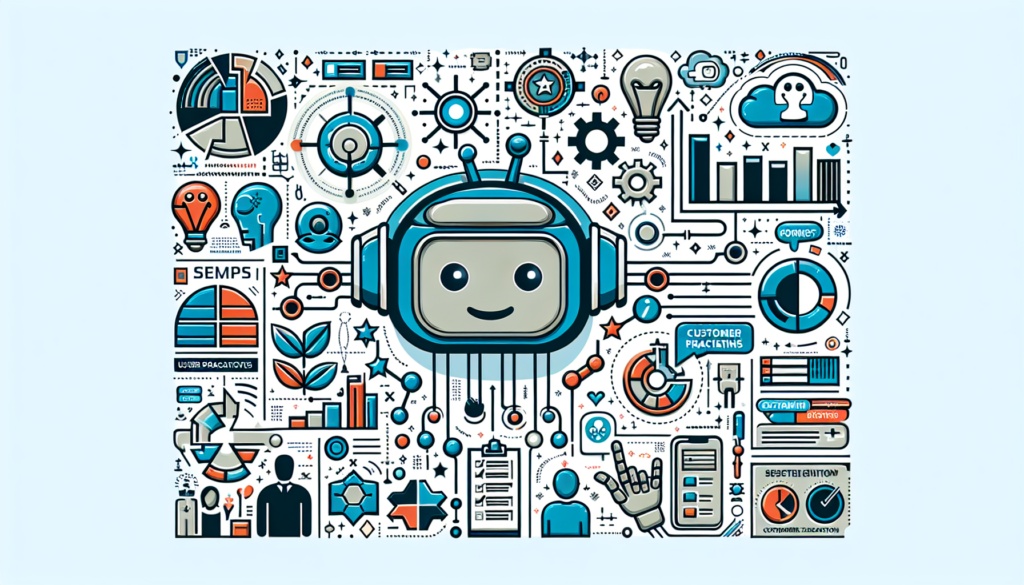In the vast and dynamic landscape of artificial intelligence, chatbots are key players that are transforming the interaction between businesses and customers. They represent significant advances in the realm of customer service, enabling uninterrupted availability and more personalized service. However, the effectiveness of these conversational systems is not only in their communication capabilities but also in their proper deployment and maintenance. In this analysis, we will explore the best practices and methodologies for creating and optimizing customer-oriented chatbots, highlighting how each strategy impacts the end user’s experience.
Understanding and Intent Design
A chatbot that doesn’t properly understand user intentions is bound to fail. Therefore, it is vital to invest in the development of robust natural language processing (NLP) models that can accurately interpret the desires and needs of the interlocutors. Training these models with large amounts of data that reflect the language and specific intentions of the target audience is indispensable. The latest advances in language models such as GPT-3 and BERT have proven promising in this area, thanks to their ability to handle complex contexts and fluid conversations.
Sentiment Analysis
One of the practical applications of natural language processing is sentiment analysis. This technique is essential for monitoring customer satisfaction in real time, allowing for proactive adjustments of the chatbot. Implementing a sentiment analysis module within the chatbot’s framework ensures continuous calibration of the tone and content of the responses offered.
Adaptable and Scalable Architecture
Scalability is a buzzword when talking about customer-oriented services. Chatbots must be designed to handle fluctuations in request volume without compromising the quality of the user experience. The use of microservices and containers, for instance, allows for horizontal scalability and quickly adapts to changes in demand.
Integration of third-party APIs is another important consideration. Chatbots must be able to connect with other services and systems (CRM, databases, payment services, etc.) to enrich the user experience and provide comprehensive service.
User Interface and Personalization
The User Interface (UI) of a chatbot should not be underestimated. Although the chatbot primarily communicates through text, visual elements such as cards, buttons, and carousels can significantly enhance interaction. Personalization also plays an important role: chatbots that use user behavior and preference data to personalize conversations tend to have higher customer satisfaction.
Case Study: KLM Royal Dutch Airlines
A notable example of a successful chatbot is the one developed by KLM Royal Dutch Airlines. Their chatbot “BB” (BlueBot) has improved customer experience by efficiently handling booking inquiries, providing flight updates, and offering personalized services based on users’ previous data.
Security and Privacy
In the age of data protection, security and privacy are fundamental aspects of creating chatbots. Implementing security mechanisms such as two-factor authentication and data encryption protects both the company and the users. Additionally, ensuring that the chatbot complies with regulations like GDPR is imperative.
Continuous Learning and Maintenance
The ability for autonomous learning is what elevates a chatbot from functional to exceptional. The application of machine learning techniques allows a chatbot to improve over time through interactions with users. Performance monitoring and regular maintenance are key in this process of continuous learning. This maintenance includes updating knowledge databases and reviewing the chatbot’s responses to ensure accuracy and relevance.
Conclusion
Chatbots are the fruit of the union between accessibility and technological sophistication, acting as the spearhead of customer service in the digital world. Creating successful chatbots is not just about following trends but adhering to smart design principles and cutting-edge practices that ensure exceptional user experiences. Constant advances in natural language understanding, coupled with a comprehensive approach that encompasses technical and functional design, security, and continuous learning, are the pillars for the success of any customer-oriented chatbot. With these practices as a guide, companies can ensure not only customer satisfaction but also a prominent place at the forefront of technological innovation in customer service.

